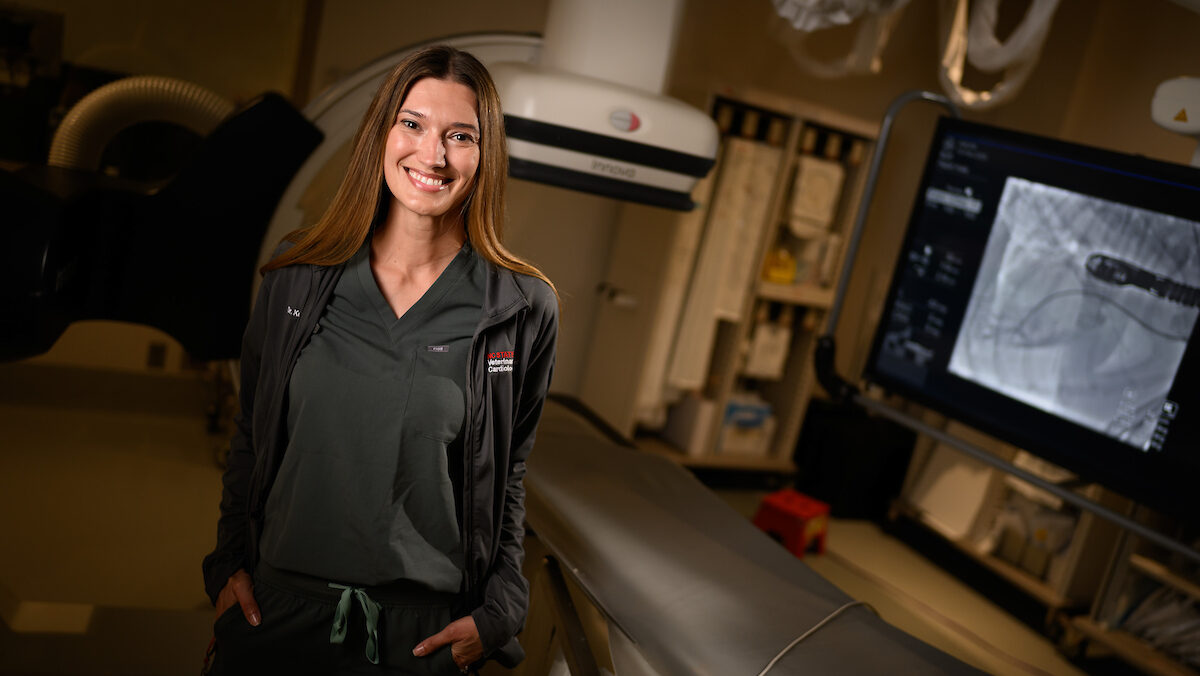Researchers Find Mutated Canine Gene May Aid Understanding of Neurodegenerative Diseases

Researchers from North Carolina State University have found a link between a mutation in a gene called RAB 24 and an inherited neurodegenerative disease in Old English sheepdogs and Gordon setters. The findings may help further understanding of neurodegenerative diseases and identify new treatments for both canine and human sufferers.
Hereditary ataxias are an important group of inherited neurodegenerative diseases in people. This group of diseases is the third most common neurodegenerative movement disorder after Parkinson’s and Huntington’s diseases.
In people with hereditary ataxia, neurons in the cerebellum that control movement begin to die, causing a gradual loss of coordination. Hereditary ataxias are also recognized in certain breeds of dog, including the Old English sheepdog and the Gordon setter.
 NC State’s Natasha Olby (professor of neurology in the College of Veterinary Medicine) and a team of researchers from the National Institute on Aging and the Broad Institute of MIT and Harvard looked at 630 Old English sheepdogs and mapped ataxia genetically in the families of affected animals. Eventually they mapped the disease to a gene, RAB 24, located on chromosome 4. A mutation in RAB 24 was closely associated with development of the disease, and on screening of affected dogs of other breeds, the identical mutation was found in Gordon setters, providing additional evidence that this mutation is important.
NC State’s Natasha Olby (professor of neurology in the College of Veterinary Medicine) and a team of researchers from the National Institute on Aging and the Broad Institute of MIT and Harvard looked at 630 Old English sheepdogs and mapped ataxia genetically in the families of affected animals. Eventually they mapped the disease to a gene, RAB 24, located on chromosome 4. A mutation in RAB 24 was closely associated with development of the disease, and on screening of affected dogs of other breeds, the identical mutation was found in Gordon setters, providing additional evidence that this mutation is important.
“Rab 24 is a protein that is believed to be important to the process of autophagy – which is how cells cleanse themselves of waste,” Olby says. “We know that autophagy and neurodegeneration are connected, so pinpointing this protein is important to our understanding of the disease process.”
“We have not yet proven that this mutation causes neurodegeneration; it could simply be a very good marker for the disease,” Olby says. “Our next step will be to determine exactly how the mutation affects the protein Rab 24 and its function and to determine whether this results in neuron death. This gene will also be investigated in humans with hereditary ataxia.”
The findings appear in PLOS Genetics. The research was funded by the American Kennel Club Canine Health Foundation with additional support from the Old English Sheepdog Club of America.
[NOTE: NC State authors joining Dr. Olby in the collaborative paper include Caryline Agler, Ganoko Urkasemsin, Dahlia Nielsen, Alison Motsinger-Reif, Tonya Harris, and Keith Linder. Dr. Linder of the College of Veterinary Medicine and Dr. Motsinger-Reif of the College of Science and Dr. Olby are researchers with the NC State Center for Comparative Medicine and Translation Research.]
[section_subtitle] Published: Note to editors: Abstract follows. [/section_subtitle]
“Canine Hereditary Ataxia in Old English Sheepdogs and Gordon Setters is Associated with a Defect in the Autophagy Gene encoding RAB24.”
Authors: Caryline Agler, Ganoko Urkasemsin, Dahlia Nielsen, Alison Motsinger-Reif, Tonya Harris, Keith Linder, Natasha Olby, North Carolina State University; Andrew Singleton, Sampath Arepalli, Dena Hernandez, Joyce van de Leemput, National Institute on Aging; Noriko Tonomura, Snaevar Sigurdsson, Ruqi Tang, Kerstin Lindblad-Toh, Broad Institute of MIT and Harvard; Jerold Bell, Tufts Cummings School of Veterinary Medicine; Dennis P O’Brien, College of Veterinary Medicine, University of Missouri; Steven Steinberg, VCA Veterinary Referral Associates.
[section_subtitle] Published: Online in PLOS Genetics [/section_subtitle]
Abstract: Old English Sheepdogs and Gordon Setters suffer from a juvenile onset, autosomal recessive form of canine hereditary ataxia primarily affecting the Purkinje neuron of the cerebellar cortex. The clinical and histological characteristics are analogous to hereditary ataxias in humans. Linkage and genome-wide association studies on a cohort of related Old English Sheepdogs identified a region on CFA4 strongly associated with the disease phenotype. Targeted sequence capture and next generation sequencing of the region identified an A to C single nucleotide polymorphism (SNP) located at position 113 in exon 1 of an autophagy gene, RAB24, that segregated with the phenotype. Genotyping of six additional breeds of dogs affected with hereditary ataxia identified the same polymorphism in affected Gordon Setters that segregated perfectly with phenotype. The other breeds tested did not have the polymorphism. Genome-wide SNP genotyping of Gordon Setters identified a 1.9MB region with an identical haplotype to affected Old English Sheepdogs. Histopathology, immunohistochemistry and ultrastructural evaluation of the brains of affected dogs from both breeds identified dramatic Purkinje neuron loss with axonal spheroids, accumulation of autophagosomes, ubiquitin positive inclusions and a diffuse increase in cytoplasmic neuronal ubiquitin staining. These findings recapitulate the changes reported in mice with induced neuron-specific autophagy defects. Taken together, our results suggest that a defect in RAB24, a gene associated with autophagy, is highly associated with and may contribute to canine hereditary ataxia in Old English Sheepdogs and Gordon Setters. This finding suggests that detailed investigation of autophagy pathways should be undertaken in human hereditary ataxia.
- Categories:


